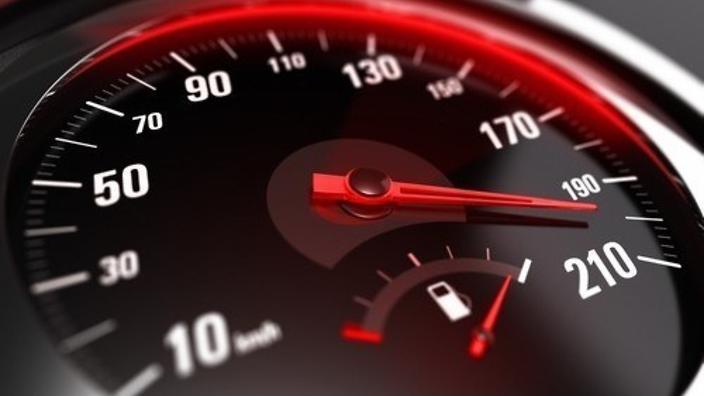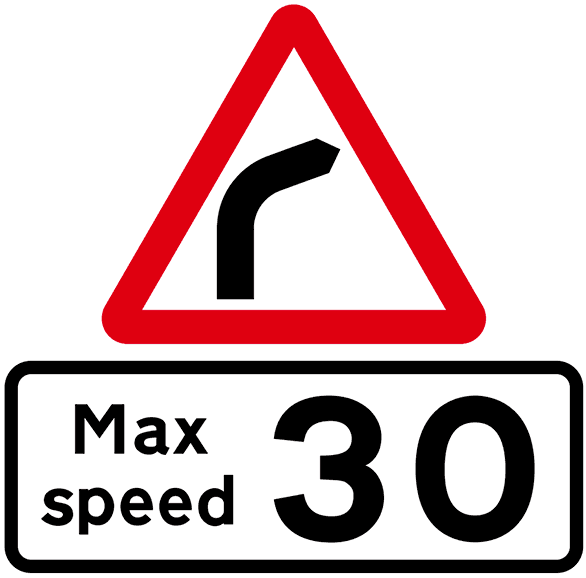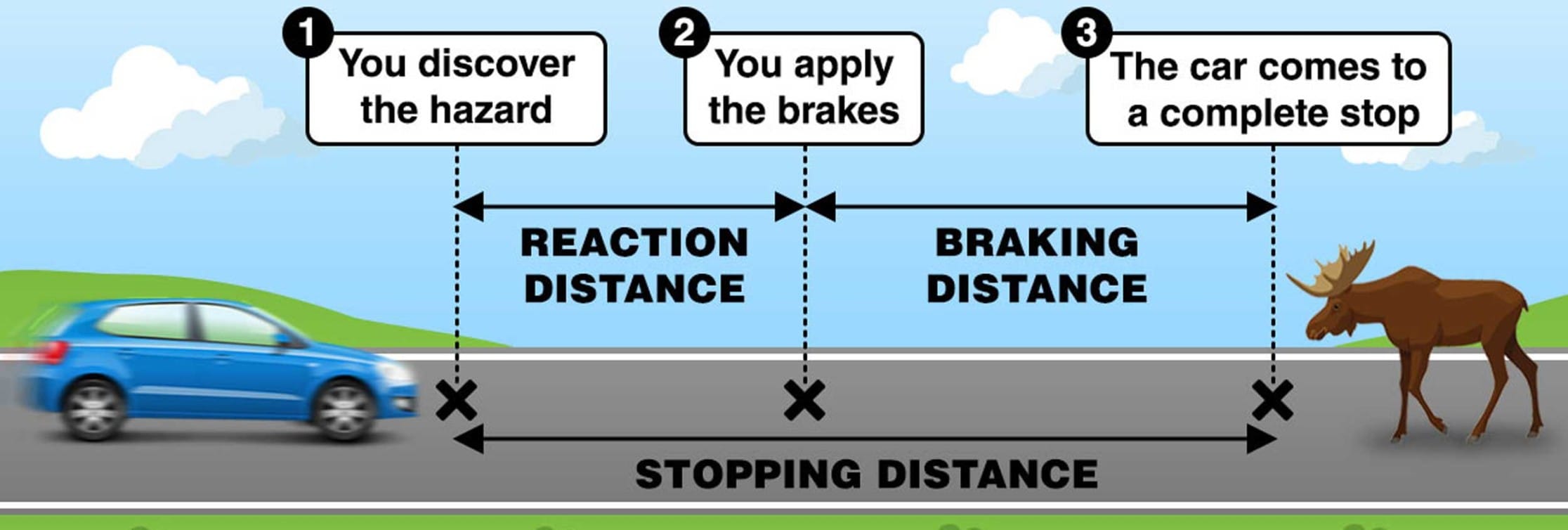Introduction
Speed is one of the most crucial factors in driving. While it can make travel efficient and time-saving, excessive speed or over-speeding turns roads into dangerous zones, leading to severe injuries and fatal accidents. Governments and transport authorities worldwide enforce strict speed limits to ensure road safety.
Speeding reduces a driver’s ability to react to sudden obstacles and increases stopping distances, making accidents more severe. Various speed limit signs indicate safe driving speeds for different roads and conditions. Understanding the importance of speed limits and braking systems can save countless lives on the road.
Understanding
Speed Limits and Speed Signs
Speed limits are regulatory measures designed to control vehicle speeds based on road conditions, traffic, and safety considerations. Speed limit signs are categorized into three main types:
1.Regulatory Speed Signs:
Indicate the maximum legal speed for a particular road. Examples include 40 km/h, 50 km/h, 60 km/h, etc.
2.Advisory Speed Signs:
Recommend safe speeds for specific conditions, such as curves or school zones.
3.Variable Speed Signs:
Found on highways, these adjust speed limits based on traffic, weather, or emergencies.
Ignoring these signs and exceeding speed limits poses risks to drivers, passengers, and pedestrians.
Why Do People Over-Speed?
Many drivers exceed speed limits due to various reasons, often underestimating the dangers involved. Some of the common reasons include:
- Running Late:
People in a hurry often speed to make up for lost time, not realizing that a few saved minutes are not worth the risk of an accident. - Thrill-Seeking:
Some drivers enjoy the adrenaline rush of driving fast, ignoring the potential consequences.
- Overconfidence:
Experienced drivers may believe they have full control over their vehicle, leading them to ignore speed limits. - Lack of Awareness:
Many drivers do not fully understand the increased stopping distances and reaction times required at higher speeds. - Peer Pressure:
Younger drivers, in particular, may feel pressured by friends to drive fast to impress others.
- Empty Roads:
Drivers may over-speed on empty roads, believing it is safe without realizing the risks posed by sudden obstacles or mechanical failures. - Influence of Alcohol or Drugs:
Impaired judgment leads to reckless driving behaviors, including speeding.
While these reasons may seem justifiable at the moment, none of them are worth the potential loss of life. Every time a driver chooses to speed, they gamble with their own safety and that of others on the road. No appointment, thrill, or ego boost is more valuable than life itself.
Why Over-Speeding
Is a Road to Disaster
Over-speeding is a leading cause of road accidents globally. Some key dangers of excessive speed include:
1.Reduced Reaction Time:
At higher speeds, a driver has less time to respond to unexpected situations like pedestrians crossing, sudden lane changes, or road obstacles. For example, at 100 km/h, a driver covers 28 meters just during their reaction time before even pressing the brakes.
2.Increased Stopping Distance:
The faster a vehicle travels, the longer it takes to stop, increasing the risk of collisions.
3.Greater Impact Force:
In a crash, the kinetic energy involved in a high-speed accident is significantly higher. The force of impact increases quadratically with speed, meaning a crash at 100 km/h is four times more severe than a crash at 50 km/h.
4.Less Control Over the Vehicle:
High speeds make vehicles harder to control, especially in sharp turns or slippery conditions.
5.Increased Risk of Fatalities:
Studies show that the probability of fatal injuries rises exponentially with speed.
The Catastrophic Consequences
of Over-Speeding
Over-speeding is not just a violation of traffic rules; it is a significant threat to life and property. Here are some additional risks of speeding:
1.Higher Fuel Consumption:
Vehicles consume more fuel at higher speeds, leading to greater environmental pollution and economic costs.
2.Tire Blowouts:
Excessive speed increases the chances of tire failure, leading to dangerous situations on highways.
3.Rollovers and Vehicle Instability:
Speeding increases the likelihood of rollovers, particularly for SUVs and trucks, due to their high center of gravity.
4.Endangerment of Pedestrians and Cyclists:
In urban areas, high-speed vehicles pose severe risks to pedestrians and cyclists, who have little protection in case of a collision.
5.Legal Consequences:
Drivers caught speeding face heavy fines, license suspension, and even imprisonment in cases of severe accidents.
Additional Dangers and Problems
of Over-Speeding
1.Driver Fatigue and Stress:
Driving at high speeds requires intense concentration, leading to mental fatigue and stress. This increases the risk of errors and misjudgments.
2.Adverse Weather Conditions:
Rain, fog, or icy roads make speeding even more dangerous, as reduced traction increases the chances of skidding and losing control.
3.Increased Wear and Tear on Vehicles:
High speeds put excessive strain on brakes, engines, and tires, reducing vehicle lifespan and increasing maintenance costs.
4.Difficulty in Navigating Curves and Intersections:
Speeding through curves and intersections raises the chances of veering off-road or colliding with other vehicles.
5.Disregard for Traffic Laws:
Over-speeding often leads to reckless behavior such as running red lights, unsafe overtaking, and ignoring pedestrian crossings, further endangering road users.
6.Emotional Toll on Families:
Fatal accidents caused by over-speeding leave families devastated, leading to emotional and financial hardships.
Despite these known dangers, many drivers continue to over-speed, risking not just their lives but also those of other road users. The urgency to reach a destination should never outweigh the importance of safety.
Braking Distance and Reaction Time:
How Long Does It Take to Stop?
Stopping a vehicle requires two key phases:
- Reaction Time:
The time it takes for the driver to perceive an obstacle and decide to apply the brakes. - Braking Distance:
The distance the vehicle travels after the brakes are applied before coming to a stop.
–Calculation of Stopping Distance and time
Stopping distance is influenced by speed, road conditions, vehicle weight, and braking system efficiency. It is calculated as:
Total Stopping Distance =
Reaction Distance + Braking Distance The reaction time of an average human is 1.5 seconds. Let’s calculate stopping distances for different speeds:
| Speed (km/h) | Reaction Distance (m) | Braking Distance (m) | Total Stopping Distance (m) |
|---|---|---|---|
| 40 | 11m (1.5s) | 6m (2s) | 17m (3.5s) |
| 50 | 14m (1.5s) | 11m (3s) | 25m (4.5s) |
| 60 | 17m (1.5s) | 19m (4.3s) | 36m (5.8s) |
| 80 | 22m (1.5s) | 35m (7s) | 57m (8.5s) |
| 100 | 28m (1.5s) | 55m (10.5s) | 83m (12s) |
| 120 | 33m (1.5s) | 80m (15s) | 113m (16.5s) |
| 130 | 36m (1.5s) | 96m (17.7s) | 132m (19.2s) |
| 150 | 42m (1.5s) | 135m (23.9s) | 177m (25.4s) |
| 180 | 50m (1.5s) | 189m (32.3s) | 239m (33.8s) |
| 200 | 56m (1.5s) | 244m (41.1s) | 300m (42.6s) |
These figures demonstrate that higher speeds drastically increase stopping distances, leading to severe consequences in case of an emergency.
Old vs. New Braking Systems &
Their Effect on Stopping Distance
Braking technology has advanced significantly over the years, improving vehicle safety. However, even modern braking systems have limitations at excessive speeds. Here’s a comparison of the braking time and stopping distance difference between old and new systems at various speeds:
| Speed (km/h) | Old Braking System Stopping Time (s) | Modern Braking System Stopping Time (s) | Old Braking System Stopping Distance (m) | Modern Braking System Stopping Distance (m) |
| 40 | 3.5s | 2.8s | 18m | 15m |
| 50 | 4.5s | 3.6s | 26m | 21m |
| 60 | 5.8s | 4.5s | 38m | 30m |
| 80 | 8.5s | 6.6s | 60m | 46m |
| 100 | 12.0s | 9.3s | 88m | 68m |
| 120 | 16.5s | 12.6s | 124m | 96m |
| 130 | 19.2s | 14.8s | 144m | 114m |
| 150 | 25.4s | 19.6s | 190m | 148m |
| 180 | 33.8s | 26.4s | 258m | 196m |
| 200 | 42.6s | 33.2s | 332m | 248m |
While modern braking systems reduce stopping times and distances, the difference is still marginal at extremely high speeds, proving that over-speeding remains dangerous regardless of braking technology.
Conclusion:
Life is More Valuable Than Speed
Speeding is one of the most dangerous habits on the road, increasing accident severity, stopping distances, and fatality rates. The urgency to reach a destination should never take precedence over safety. Every year, thousands of lives are lost due to reckless speeding—lives that could have been saved with responsible driving.
Your family, friends, and loved ones want you to reach home safely. No destination is worth the risk of an accident. By understanding speed limits, braking systems, reaction times, and safe driving rules, drivers can prevent unnecessary tragedies and ensure safer roads for everyone.
Always remember: Life is more valuable than speed. Drive responsibly, stay within speed limits, and prioritize safety over haste. The road is not a racetrack—your life and the lives of others depend on the choices you make behind the wheel.
(Click notification ![]() for more updates)
for more updates)
Artical was written by V.Harishram
''Stay true, bring facts to you''





[…] Over-Speeding: One of the way to meet hell. Why is danger? – TAMILIZ News & Articles […]